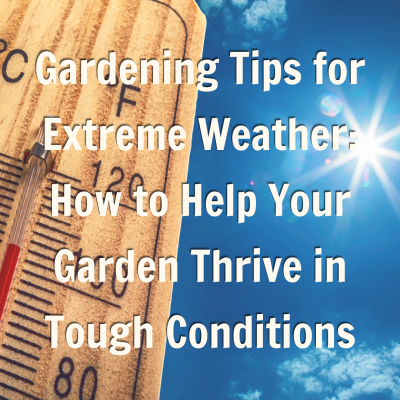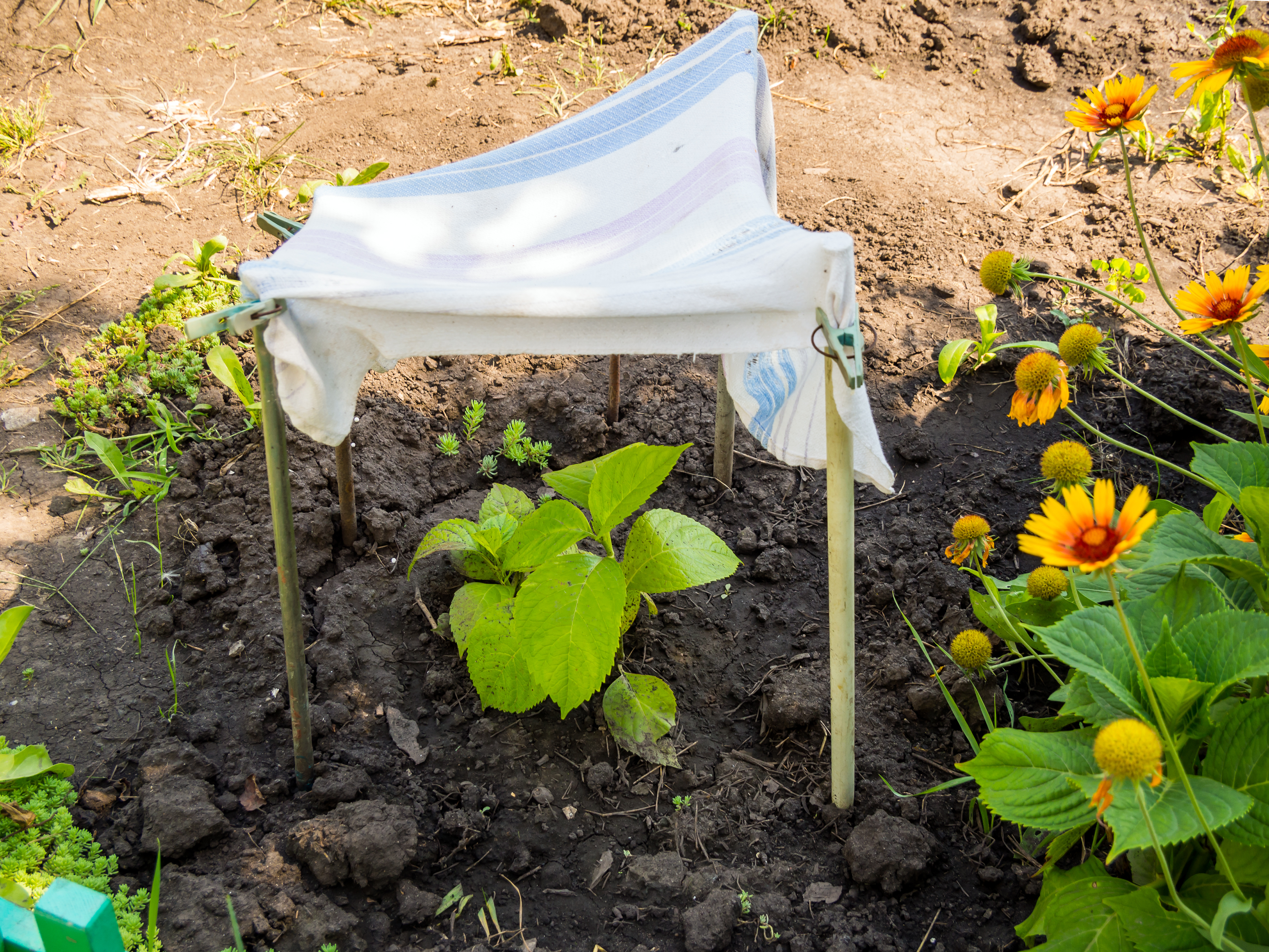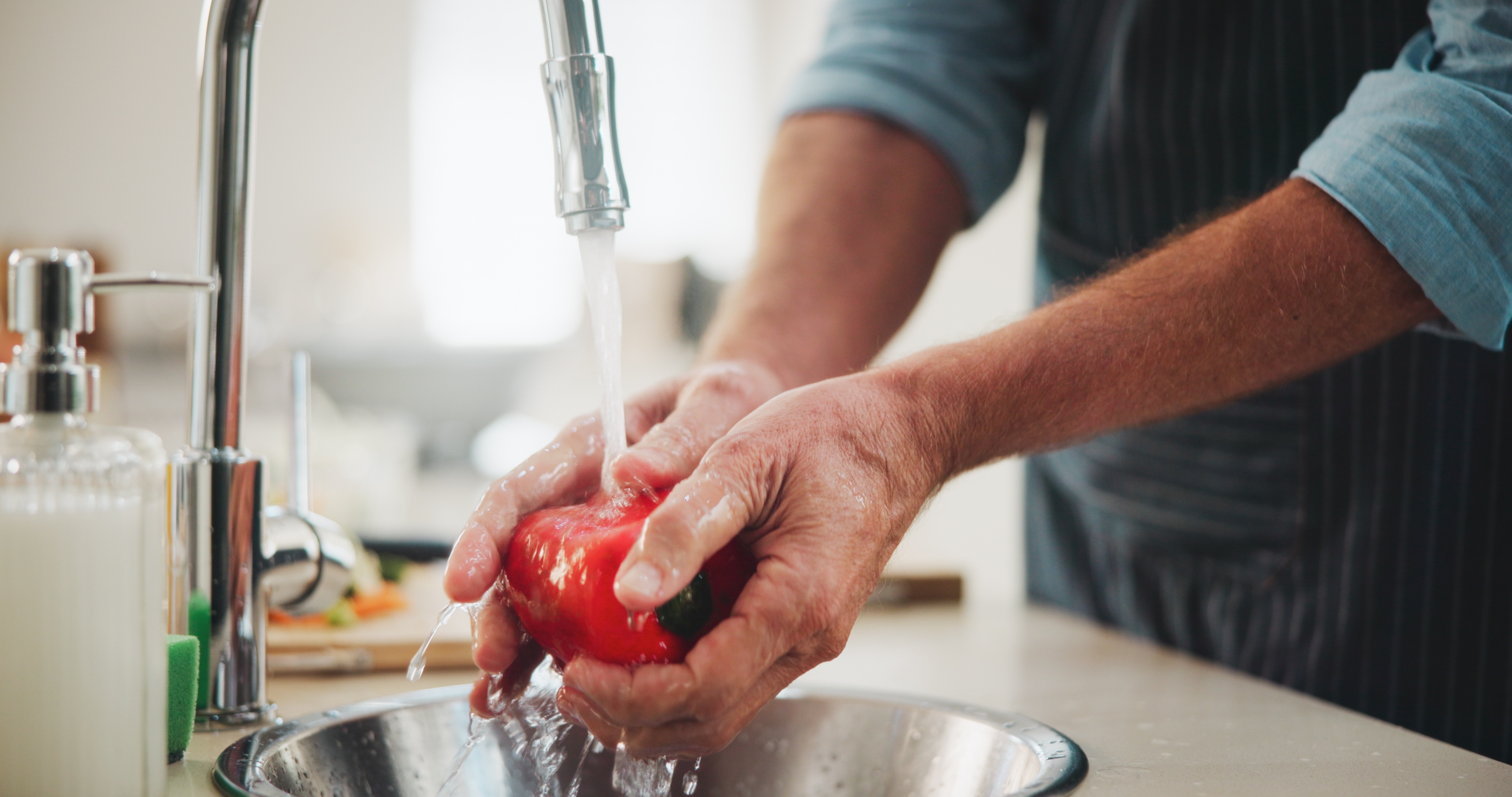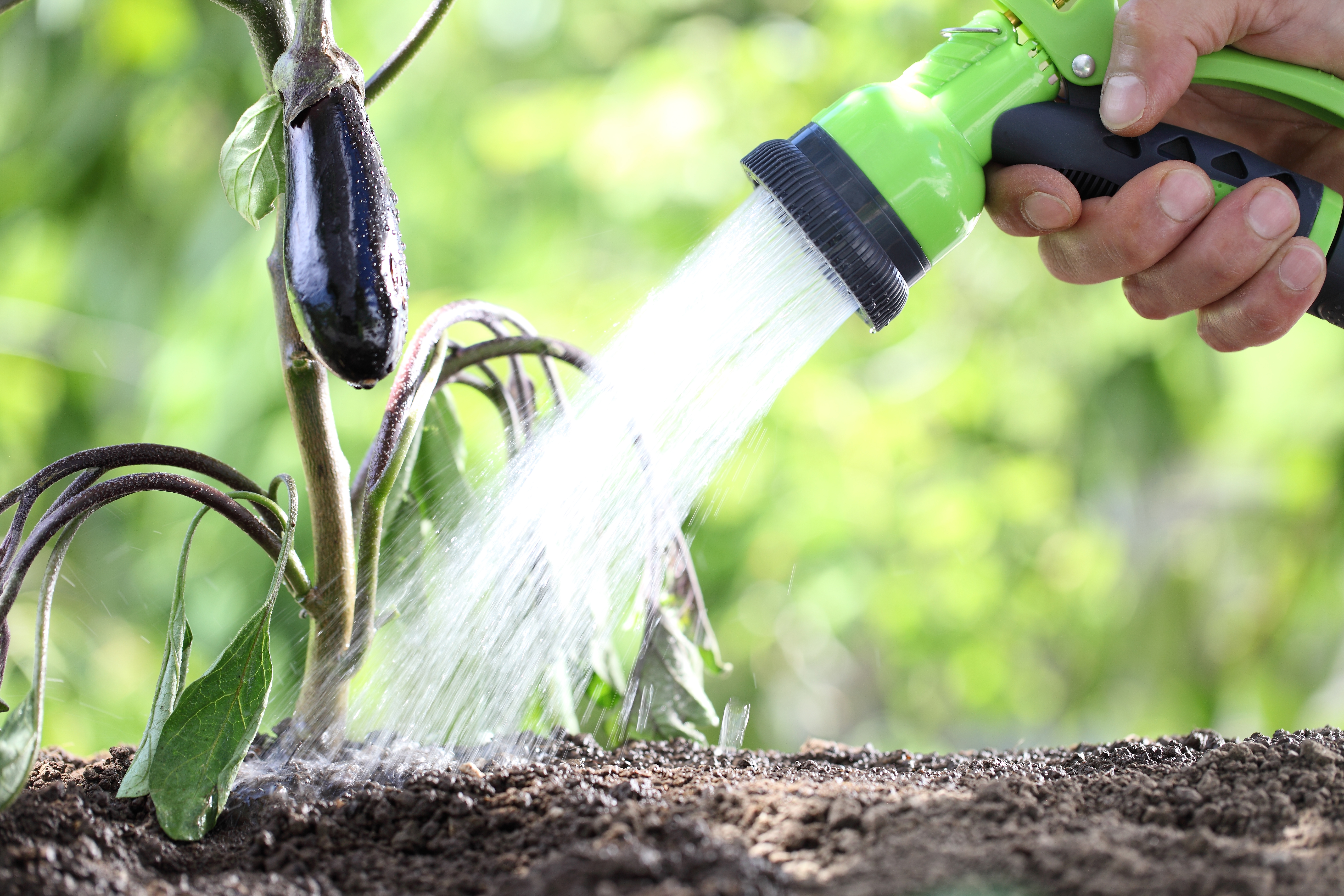
When extreme weather hits, your garden feels it, too. Whether it’s scorching heat, smoky skies or drought, there are simple steps you can take to protect your plants and garden.
Gardening in High Heat: How to Keep Plants Alive During Hot Weather
When temperatures hit 90 degrees F or higher during the day and stay above 70 degrees F at night, plants can become stressed. Here are tips to help protect them:
- Water in the morning: Water early so that plants and the soil can absorb more water before the heat sets in. If you notice plants wilting later in the day, water again to get them through until next morning.
- Use mulch to retain moisture: Covering your soil with mulch, like straw, wood chips or dry leaves, can help trap moisture and slow down water loss. It also helps lower the amount of water you use in the garden.
- Create DIY plant shade: Setting up a shade cloth above your plants can help reduce direct sunlight, which may burn your plants. You can reuse a light-colored bed sheet, t-shirt, or cloth. Attach your shade cloth above your plants by tying it to supports such as sticks, stakes or even chairs. It should be secure enough so that the wind cannot blow it off.

Gardening During Smoke and Wildfires
When wildfires affect your region, air quality and ash can harm both plants and people. Here is how to handle gardening during wildfire season:
- Avoid gardening when air quality is poor: Stay indoors until conditions are safe.
- Rinse ash off plants: Do this early in the morning. If possible, rinse the ash away from the top of your soil using a hose to guide the ash towards non-growing areas. For containers, you can turn them sideways and rinse the ash off. Ash is acidic and can affect how well your plants grow.
- Know when produce is safe to eat: If your produce has a light layer of ash, it will be safe to eat. Rinse it off outside and then give it a second or third rinse indoors. If the ash layer is heavy or the garden is near a structure fire, throw the food away or compost it.
- Be patient with slow growth: Wildfire and smoke block sunlight, affecting how well your plants grow. Thankfully, plants are strong, and they may recover without issues.

Gardening During a Drought
Water conservation is key when you’re gardening during a drought. These tips will help your plants stay hydrated with minimal waste:
- Water more often: During a drought, your plants may need more frequent waterings to stay healthy.
- Check your soil moisture before watering: It is helpful to know if your plants need water. Stick one finger into the soil near your plant. If the soil is cool and damp, then you do not need to water. If your finger comes out dry, then it’s time to water.
- Know your plants: Some plants, like beans and tomatoes, can get water from deeper under the ground. Your finger may not be long enough to feel that moisture. To test the soil moisture deeper, use a dry stick, such as a wooden chopstick or a popsicle stick. Stick it into the soil as deep as you can and wait a few seconds. When you pull up the stick, it will either be clean or have soil on it. A mostly clean stick means the soil is dry. If there is soil on the stick, there is still moisture in the ground.
- Mulch again! Just as during high heat, cover your soil with mulch during a drought. This will help trap moisture and slow down water loss. Try straw, wood chips or dry leaves.

Extreme weather doesn’t mean you have to give up on your garden. By watering sensibly, using mulch and adjusting your gardening schedule, you can keep your plants healthy through tough conditions.




